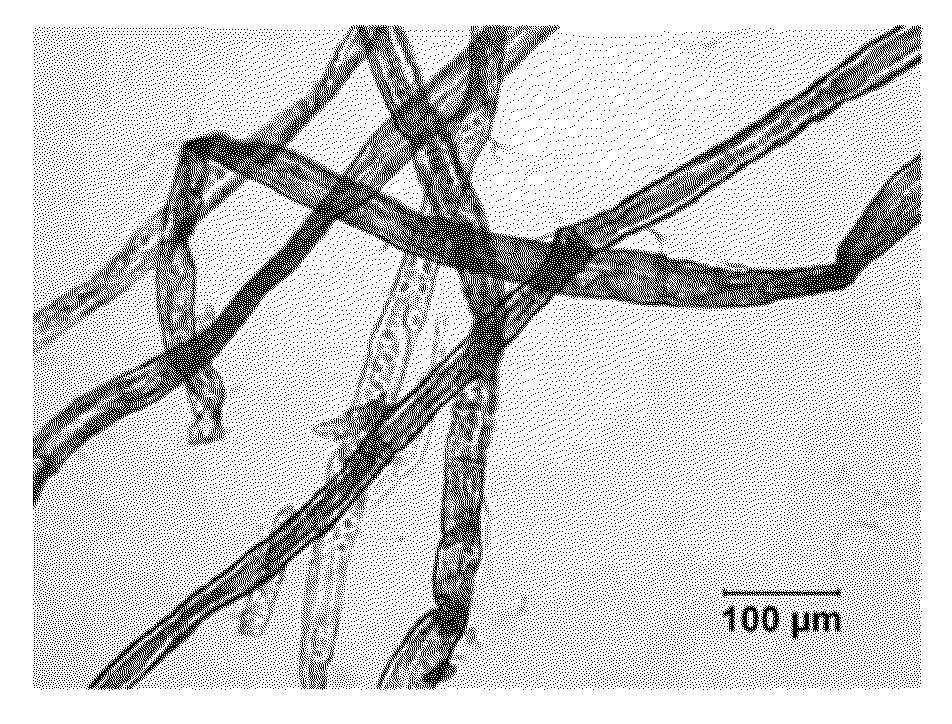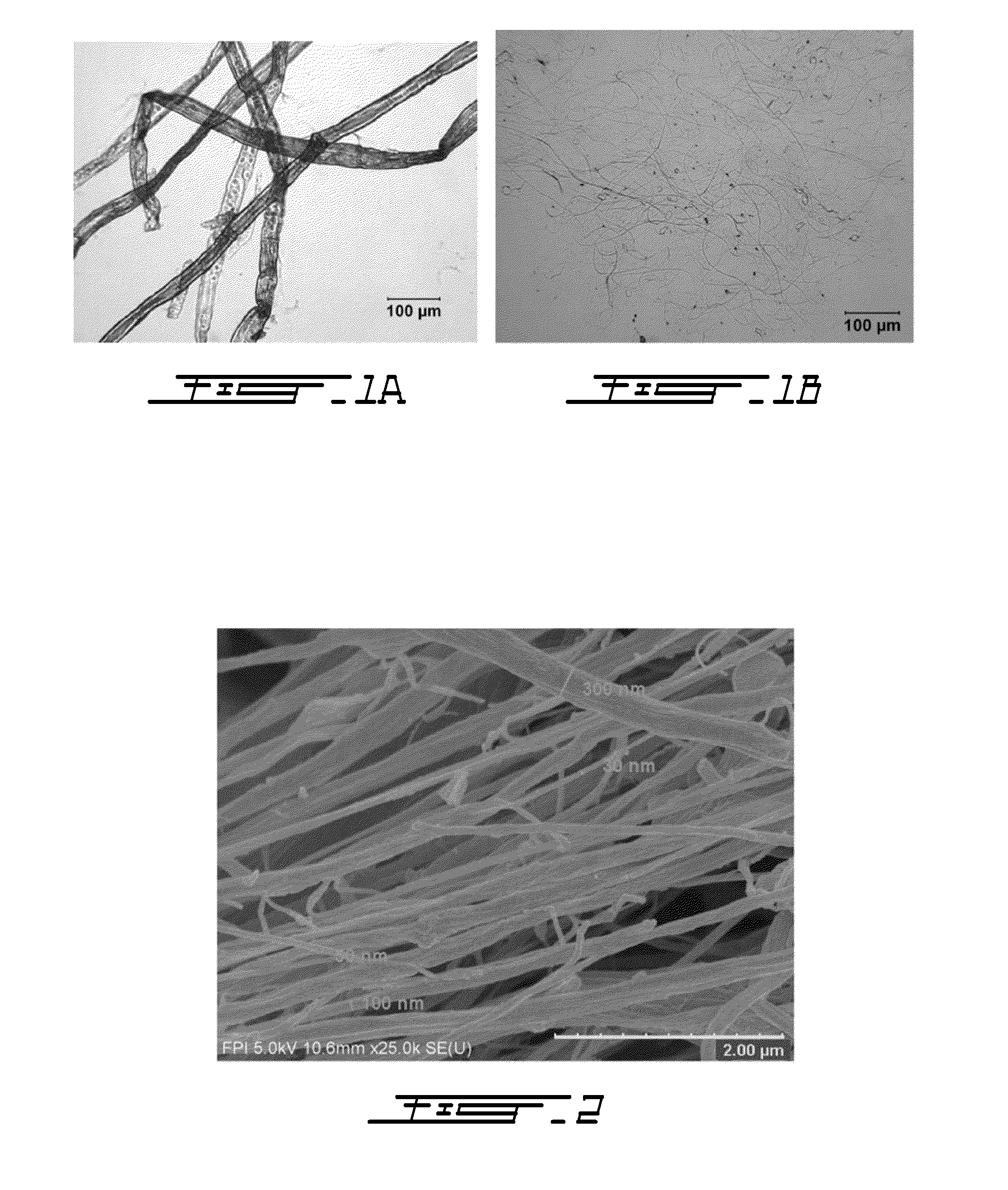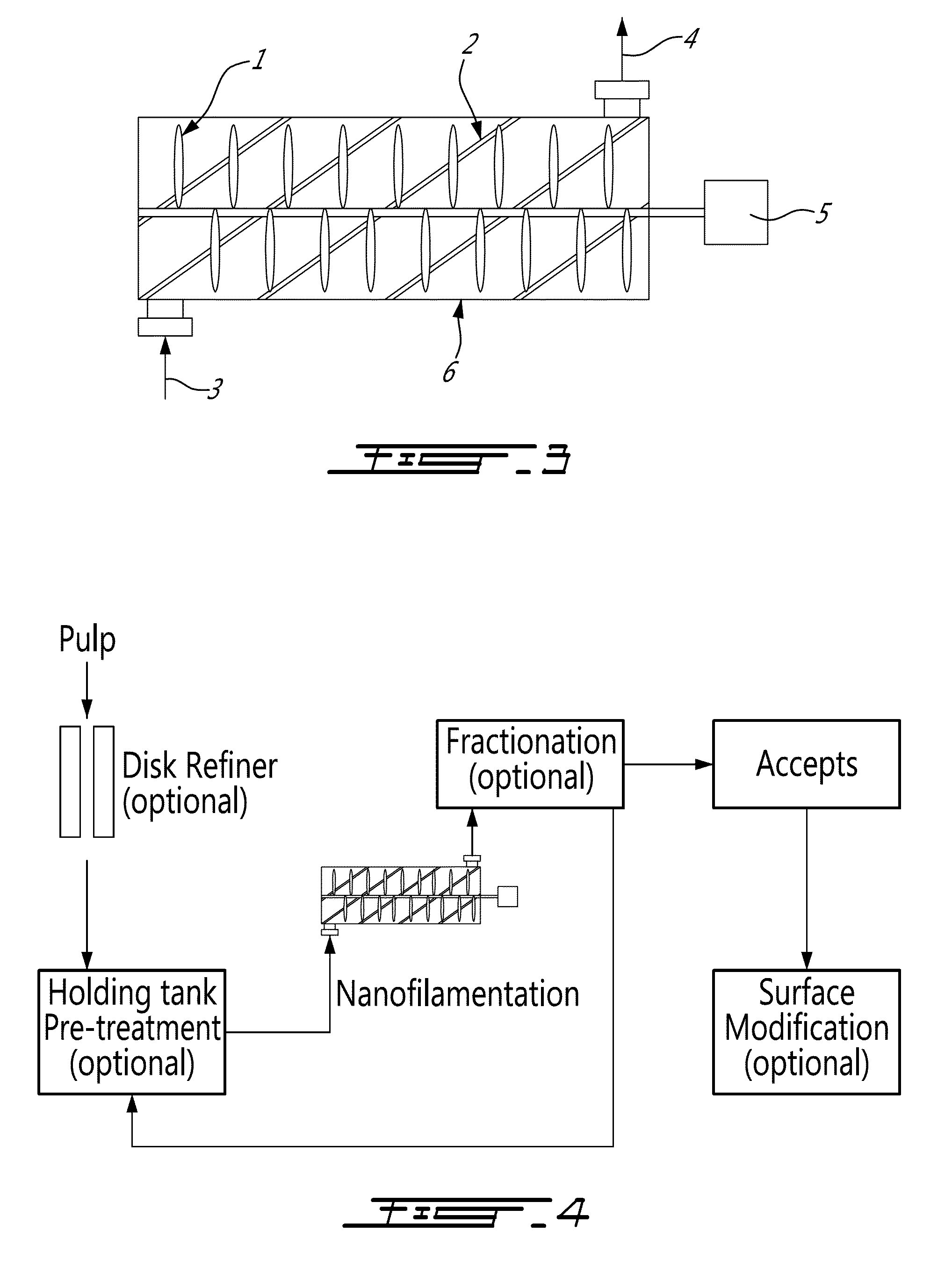Cellulose nanofilaments and method to produce same
a technology of cellulose nano-filaments and cellulose nano-filaments, which is applied in the directions of inorganic compound addition, retention agent addition, reinforcing agent addition, etc., can solve the problems of mfc after drying having difficulty in redistributing in water, sensitivity, and not really improving the strength of never-dried wet sheets, etc., to achieve the effect of improving the strength properties of paper products
- Summary
- Abstract
- Description
- Claims
- Application Information
AI Technical Summary
Benefits of technology
Problems solved by technology
Method used
Image
Examples
example 1
Cellulose nanofilaments (CNF) were made from a mixture of bleached softwood kraft pulp and bleached hardwood kraft pulp according to the present invention. The proportion of softwood to hardwood in the blend was 25:75.
The mixture was refined to a freeness of 230 ml CSF prior to the nanofilamentation procedure, liberate some fibrils on the surface of the feed cellulose. Eighty g / m2 handsheets were made from a typical fine paper furnish with and without calcium carbonate filler (PCC), and with varying amounts of the nanofilaments. FIG. 5 shows the tensile energy absorption (TEA) of these never-dried wet sheets at 50% solids content. When 30% (w / w) PCC was incorporated into the sheets, the TEA index was reduced from 96 mJ / g (no filler) to 33 mJ / g. An addition of 8% CNF increased the TEA to a level similar to that of unfilled sheets. With higher levels of CNF addition, the wet-web strength was further improved, by 100% over the non-PCC standard. At a dosage level of 28%, the wet-web ten...
example 2
Cellulose nanofilaments were prepared following the same method as in Example 1, except that unrefined bleached hardwood kraft pulp or unrefined bleached softwood kraft pulp were used instead of their mixture. A fine paper furnish was used to make handsheets with 30% w / w PCC. To demonstrate the effect of the two nanofilaments, they were added into the furnish at a dosage of 10% before sheet preparation. As shown in Table 1, 10% CNF from hardwood improved the wet-web TEA by 4 times. This is a very impressive performance. Nevertheless, the CNF from softwood had even a higher performance. The TEA of the web containing CNF from softwood was nearly seven times higher than that of the control sample. The lower performance of the CNF from hardwood compared to CNF from softwood is probably caused by it having shorter fibers. Hardwood usually has a significant amount of parenchyma cells and other short fibers or fines. CNF generated from short fibers may be shorter too, which reduced their p...
example 3
Cellulose nanofilaments were produced from 100% bleached softwood kraft pulp. The nanofilaments were further processed to enable the surface adsorption of a cationic chitosan. The total adsorption of chitosan was close to 10% w / w based on CNF mass. The surface of CNF treated in this way carried cationic charges and primary amino groups and had surface charge of at least 60 meq / kg. The surface-modified CNF was then mixed into a fine paper furnish at varying amounts. Handsheets containing 50% PCC on a dry weight basis were prepared with the furnish mixture. FIG. 6 shows the TEA index of the wet-web at 50% w / w solids as a function of CNF dosage. Once again, the CNF exhibits extraordinary performance in wet-web strength enhancement. There is an increase in TEA of over 60% at a dosage as low as 1%. The TEA increased linearly with CNF dosage. At an addition level of 10%, the TEA was 13 times higher than the control.
PUM
| Property | Measurement | Unit |
|---|---|---|
| Temperature | aaaaa | aaaaa |
| Length | aaaaa | aaaaa |
| Length | aaaaa | aaaaa |
Abstract
Description
Claims
Application Information
 Login to View More
Login to View More - R&D
- Intellectual Property
- Life Sciences
- Materials
- Tech Scout
- Unparalleled Data Quality
- Higher Quality Content
- 60% Fewer Hallucinations
Browse by: Latest US Patents, China's latest patents, Technical Efficacy Thesaurus, Application Domain, Technology Topic, Popular Technical Reports.
© 2025 PatSnap. All rights reserved.Legal|Privacy policy|Modern Slavery Act Transparency Statement|Sitemap|About US| Contact US: help@patsnap.com



